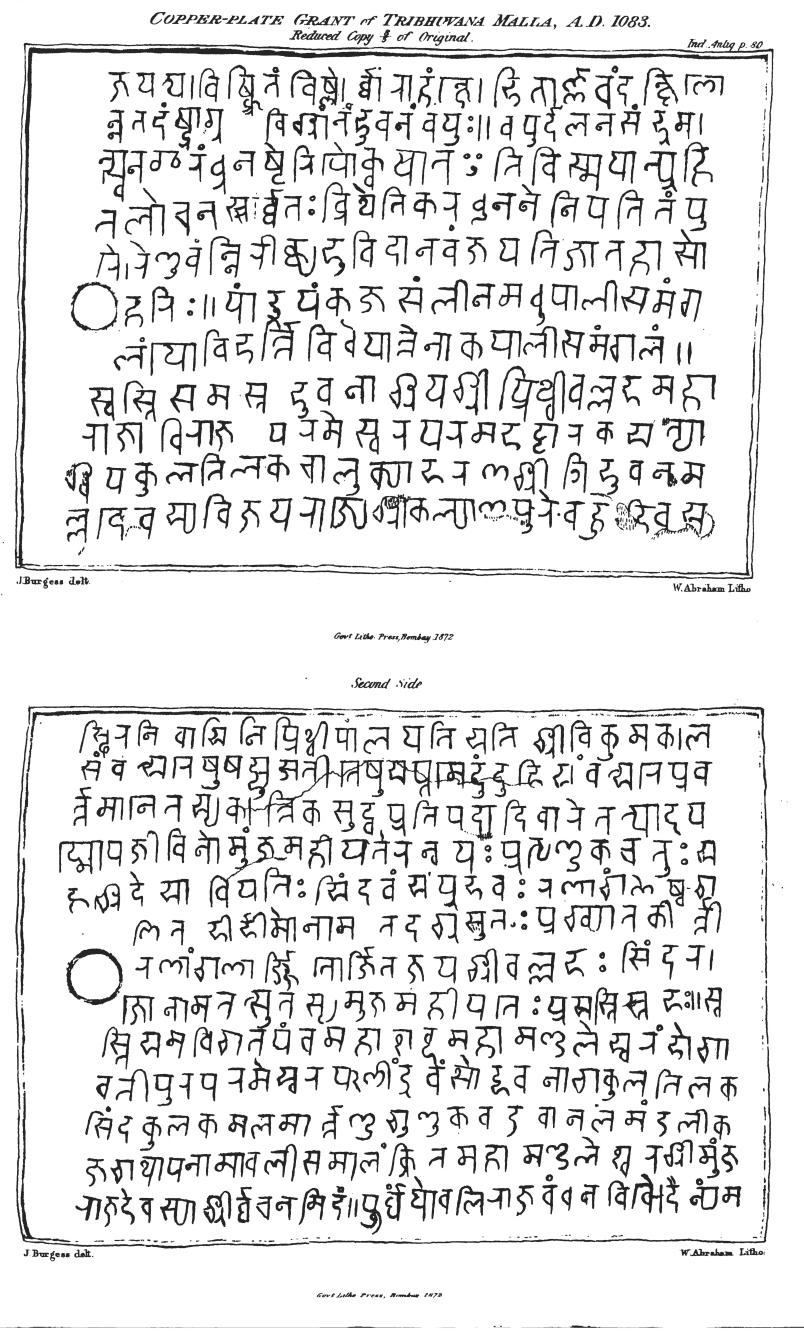|
Vńęramitrodaya
The Vńęramitrodaya is a commentary on Yajnavalkya Smriti and a Hindu law digest written by MitramiŇõra which covers nearly every aspect of ''DharmaŇõńĀstra''. The text also includes VyavahńĀra as well, as the name would suggest. The work was done at the behest of Vńęrasimha, the king of Orchha, from 1605-1627. The privy Council in the Benares School of Hindu Law considered the text to be a work of high authority. MitamiŇõra's text includes hundreds of citations in which he analyzes and critiques numerous arguments, particularly those made by members of the Bengal school. Text The text is divided into sections, called ''prakńĀŇõas'' which include: ''VyavahńĀra'' * The ''VyavahńĀra-PrakńĀŇõa'' is considered to be the largest ''nibandha'', or digest written on the ''VyavahńĀra'' * The text is divided into four parts: 1.) Composition of the Court * Constitution of the ''sabhńĀ'' * The Appointment of judges * Conflict with the ''DharmaŇõńĀstra ''DharmaŇõńĀstra'' ( sa, ŗ§ßŗ§įŗ ... [...More Info...] [...Related Items...] OR: [Wikipedia] [Google] [Baidu] |
DharmaŇõńĀstra
''DharmaŇõńĀstra'' ( sa, ŗ§ßŗ§įŗ•ćŗ§ģŗ§∂ŗ§ĺŗ§łŗ•ćŗ§§ŗ•ćŗ§į) is a genre of Sanskrit texts on law and conduct, and refers to the treatises (shastras, ŇõńĀstras) on dharma. Unlike DharmasŇętra which are based upon Vedas, these texts are mainly based on Puranas. There are many Dharmashastras, variously estimated to be 18 to about 100, with different and conflicting points of view. Each of these texts exist in many different versions, and each is rooted in Dharmasutra texts dated to 1st millennium BCE that emerged from Kalpa (Vedanga) studies in the Vedic era. The textual corpus of DharmaŇõńĀstra were composed in poetic verses, are part of the Hindu Smritis, constituting divergent commentaries and treatises on duties, responsibilities and ethics to oneself, to family and as a member of society. The texts include discussion of Ashrama (stage), ashrama (stages of life), varna (Hinduism), varna (social classes), PuruŠĻ£ńĀrtha, purushartha (proper goals of life), personal virtues and d ... [...More Info...] [...Related Items...] OR: [Wikipedia] [Google] [Baidu] |
Yajnavalkya Smriti
Yajnavalkya or Yagyavalkya ( sa, ŗ§Įŗ§ĺŗ§úŗ•ćŗ§ěŗ§Ķŗ§≤ŗ•ćŗ§ēŗ•ćŗ§Į, ) is a Hindu Vedic sage figuring in the Brihadaranyaka Upanishad (c. 700 BCE)., Quote: "Yajnavalkya, a Vedic sage, taught..."Ben-Ami Scharfstein (1998), ''A comparative history of world philosophy: from the Upanishads to Kant'', Albany: State University of New York Press, pp. 9-11 Yajnavalkya proposes and debates metaphysical questions about the nature of existence, consciousness and impermanence, and expounds the epistemic doctrine of neti neti ("not this, not this") to discover the universal Self and ńÄtman. Texts attributed to him include the '' Yajnavalkya Smriti'', '' Yoga Yajnavalkya'' and some texts of the Vedanta school. He is also mentioned in Brahma puran and various Brahmanas and Aranyakas. Setting The ''Brihadaranyaka Upanishad'' is dated at c. 700 BCE,. Staal notes that though the name Yajnavalkya is derived from ''yajna'', which connotes ritual, Yajnavalkya is referred to as "a thinker, not a ri ... [...More Info...] [...Related Items...] OR: [Wikipedia] [Google] [Baidu] |
VyavahńĀra
VyavahńĀra ( sa, ŗ§Ķŗ•ćŗ§Įŗ§Ķŗ§Ļŗ§ĺŗ§į) is an important concept of Hindu law denoting legal procedure. The term is analyzed by KńĀtyńĀyana as follows: "Vi means ‚Äėvarious,‚Äô ava means ‚Äėdoubt,‚Äô hara is ‚Äėremoval‚Äô; legal procedure is called by the term vyavahńĀra because ‚Äėit removes various doubts.‚Äô‚ÄĚ Kane defines it as follows: "When the ramifications of right conduct, that are together called dharma and that can be established with efforts (of various kinds such as truthful speech, etc.) have been violated, the dispute (in a court between parties) which springs from what is sought to be proved (such as debt), is said to be vyavahńĀra." According to Donald Davis, ‚ÄúThere are two basic meanings of vyavahńĀra. The first is a general sense of practice, business, or everyday transactions. The other, specific sense is legal procedure, the processes of litigation including a trial.‚ÄĚ Legal procedure according to the dharmaŇõńĀstras includes: court, listening to and asse ... [...More Info...] [...Related Items...] OR: [Wikipedia] [Google] [Baidu] |
Orchha
Orchha is a town, near city of Niwari in Niwari district of Madhya Pradesh state, India. The town was established by rajput ruler Rudra Pratap Singh some time after 1501, as the seat of an eponymous former princely state of covering parts of central & north India, in the Bundelkhand region. Orchha lies on the Betwa River, 80 km from Tikamgarh & 15 km from Jhansi in Uttar Pradesh. It is included in the UNESCO world heritage cities list in 2020. History Orchha was founded in 1531 (the 16th century AD) by the Bundela chief, Rudra Pratap Singh, who became the first King of Orchha, (r. 1501‚Äď1531) and also built the Fort of Orchha. The Chaturbhuj Temple was built by the queen of Orchha, Ganesh Kunwar (ŗ§óŗ§£ŗ•áŗ§∂ ŗ§ēŗ•Āŗ§Āŗ§Ķŗ§į), while ''Raj Mandir'' was built by 'Raja Madhukar Shah' during his reign, 1554 to 1591. Orchha was captured by imperial forces of the Mughal Army led by Prince Aurangzeb in October 1635. File:Ram Raja Temple, Orchha, Madhya Pradesh, Indi ... [...More Info...] [...Related Items...] OR: [Wikipedia] [Google] [Baidu] |
Hindu Law
Hindu law, as a historical term, refers to the code of laws applied to Hindus, Buddhists, Jains and Sikhs in British India. Hindu law, in modern scholarship, also refers to the legal theory, jurisprudence and philosophical reflections on the nature of law discovered in ancient and medieval era Indian texts. It is one of the oldest known jurisprudence theories in the world and began three thousand years ago whose original sources were the Hindu texts. Hindu tradition, in its surviving ancient texts, does not universally express the law in the canonical sense of ''Ius (canon law), ius'' or of ''Lex (canon law), lex''. The ancient term in Indian texts is Dharma, which means more than a code of law, though collections of legal maxims were compiled into works such as the NńĀradasmŠĻõti. The term "Hindu law" is a colonial construction, and emerged after the colonial rule arrived in Indian Subcontinent, and when in 1772 it was decided by British colonial officials, that European common ... [...More Info...] [...Related Items...] OR: [Wikipedia] [Google] [Baidu] |


.jpg)